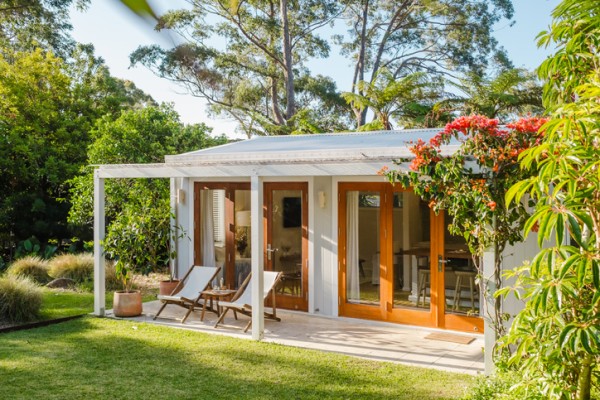
The warmer months naturally lift spirits, but a well-considered outdoor space can do much more. With the right design choices, backyards and balconies can support wellbeing, boost mood and encourage people to spend more time connecting with others.
Woodbury Furniture interior designer Chris Catarino has teamed up with occupational therapist Mark Langlois to share expert advice on creating outdoor areas that feel balanced, purposeful and uplifting as spring and summer roll in.
The power of thoughtful design
Mark, who has two decades of clinical experience, says the spaces we live in shape our daily wellbeing in powerful ways: “Environments have a profound impact on our daily wellbeing. A well-designed space can reinforce positive behaviours, reduce stress and even support cognitive function. Conversely, chaotic or cluttered areas increase cortisol and diminish quality of life.”
He adds that many people don’t realise how much their physical environment influences behaviour. While we often prioritise exercise, diet or mindfulness, the way a space looks and feels can shape mood just as strongly. Thoughtful design across landscaping, furniture choices and visual cohesion can help people live more fully, connect more meaningfully and even add value to their homes.
Prioritise order and balance
Mark notes that beauty and organisation carry psychological weight. Symmetry, balance and proportion help the brain process surroundings more easily, which lowers stress and encourages a more motivated mindset.
Chris suggests aligning furniture with natural walkways, grouping chairs to encourage conversation and arranging plants in cohesive clusters. Even small adjustments can make a garden feel instantly more welcoming.
Make the most of light and air
Sunlight and fresh air play a direct role in lifting mood and supporting mental health. Mark explains that outdoor environments with too little light can feel uninviting, while open spaces without thoughtful layout can limit social interaction.
To counter this, Chris recommends placing seating where it naturally catches the sun, adding shade options for warmer afternoons and brightening darker corners with pale finishes or reflective materials. These simple tweaks can create a more open, airy feel without the need for major renovations.
Create zones for connection and relaxation
The layout of a space shapes human interaction. Areas that are overly open can dilute engagement, while overly private spaces reduce casual connection. A balanced layout with defined zones helps foster both meaningful social time and peaceful solo moments.
Chris suggests using furniture, outdoor rugs or planters to subtly mark out different areas. A dining zone for entertaining, a lounge corner for unwinding and a quiet reading nook can each serve a purpose while still feeling cohesive within the overall space.
Bring nature and texture in
Engaging multiple senses helps people feel grounded, uplifted and connected to their environment. Mark points out that natural textures and greenery reinforce wellbeing and even small additions can have a noticeable effect.
Mixing timber, stone and plants is an easy way to build depth and atmosphere. A timber bench, potted greenery or a stone walkway can bring warmth and tactile interest, making the outdoor space feel more alive.
Anchor your space with key furniture pieces
Furniture doesn’t just serve a functional purpose; it anchors the emotional feel of a space. Mark explains that a well-chosen hero piece can invite people outdoors more often, encourage socialising and enhance the overall usability of a garden. Chris recommends investing in a standout item such as a lounge set or dining table. It defines the space visually and instantly creates a natural gathering point for family and friends.




